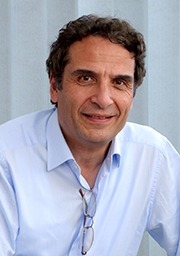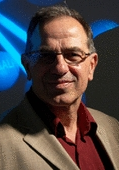| |
Short bio:
Professor Nikola Kasabov is Life Fellow of IEEE, Fellow of the Royal Society of New Zealand, Fellow of the INNS College of Fellows, DVF of the Royal Academy of Engineering UK. He is the Founding Director of the Knowledge Engineering and Discovery Research Institute (KEDRI), Auckland and Professor at the School of Engineering, Computing and Mathematical Sciences at Auckland University of Technology, New Zealand. Kasabov is the 2019 President of the Asia Pacific Neural Network Society(APNNS) and Past President of the International Neural Network Society (INNS). He is member of several technical committees of IEEE Computational Intelligence Society and Distinguished Lecturer of IEEE (2012-2014). He is Editor of Springer Handbook of Bio-Neuroinformatics, Springer Series of Bio-and Neuro-systems and Springer journal Evolving Systems. He is Associate Editor of several journals, including Neural Networks, IEEE TrNN, Tr CDS, Information Sciences, Applied Soft Computing. Kasabov holds MSc and PhD from TU Sofia, Bulgaria. His main research interests are in the areas of neural networks, intelligent information systems, soft computing, bioinformatics, neuroinformatics. He has published more than 620 publications highly cited internationally. He has extensive academic experience at various academic and research organisations in Europe and Asia, including: TU Sofia Bulgaria; University of Essex UK; University of Otago, NZ; Advisory Professor at Shanghai Jiao Tong University and CASIA China, Visiting Professor at ETH/University of Zurich and Robert Gordon University UK, Honorary Professor of Teesside University, UK.Prof. Kasabov has received a number of awards, among them:Doctor Honoris Causa from Obuda University, Budapest; INNS AdaLovelace Meritorious Service Award; NN Best Paper Award for2016; APNNA ‘Outstanding Achievements Award’; INNS Gabor Awardfor ‘Outstanding contributions to engineering applications of neural networks’; EU Marie Curie Fellowship; Bayer Science Innovation Award; APNNA Excellent Service Award; RSNZ Science and Technology Medal; 2015 AUT Medal; Honorable Member of theBulgarian, the Greek and the Scottish Societies for ComputerScience. More information of Prof. Kasabov can be found from:
https://academics.aut.ac.nz/nkasabov.
|

